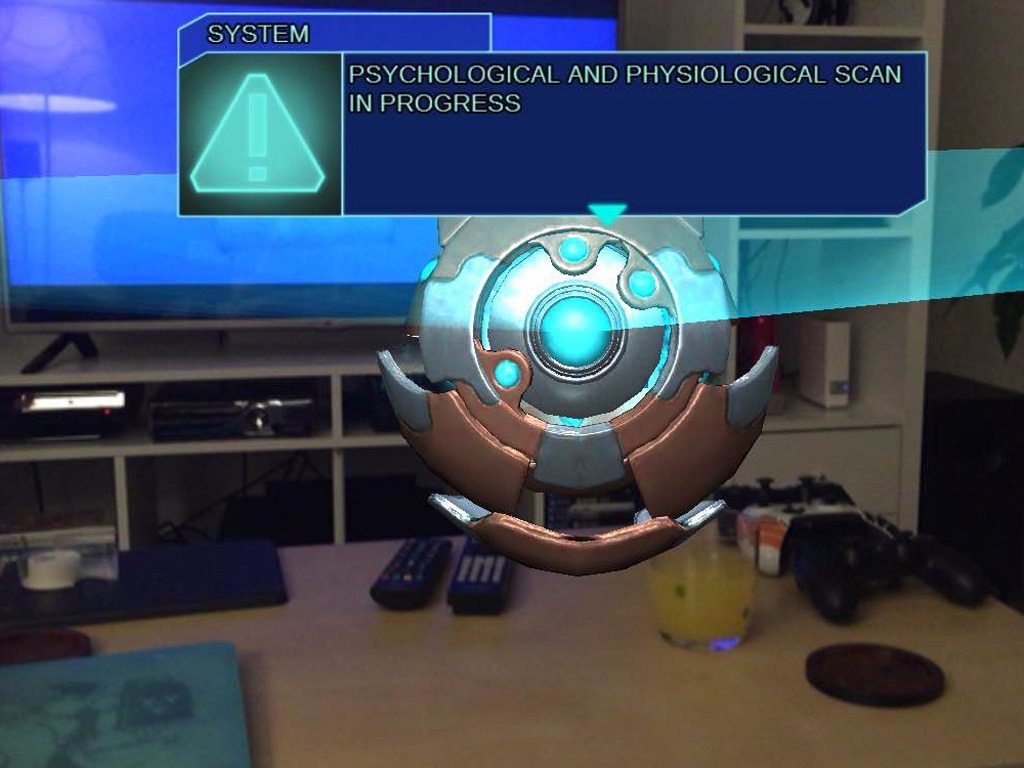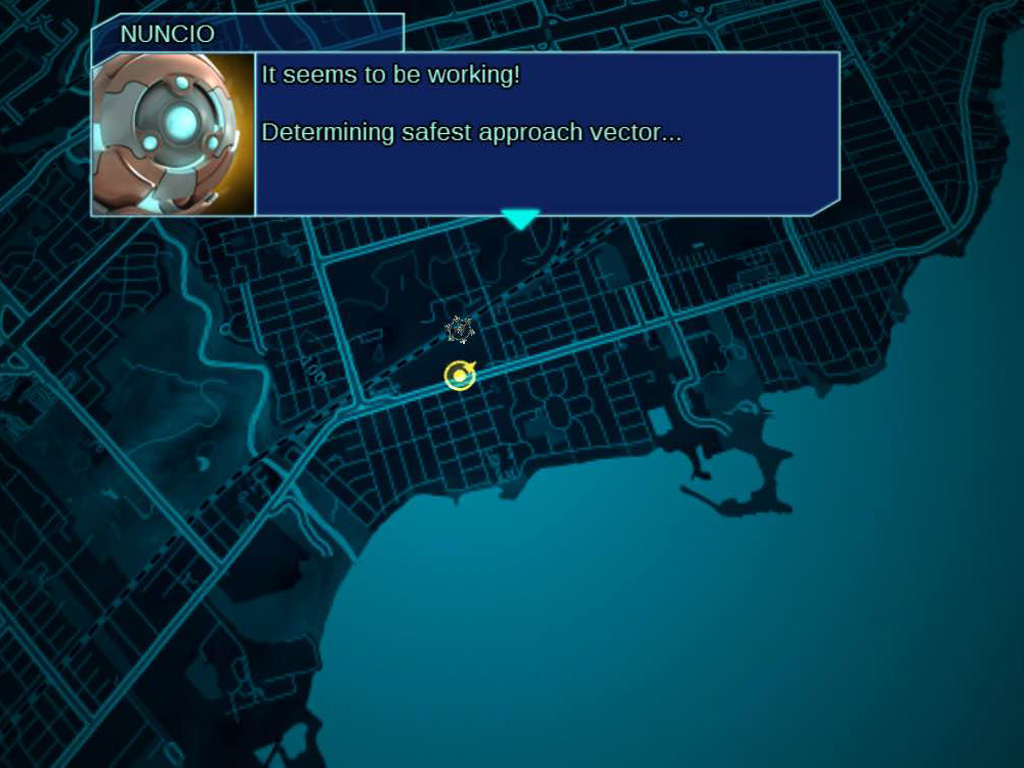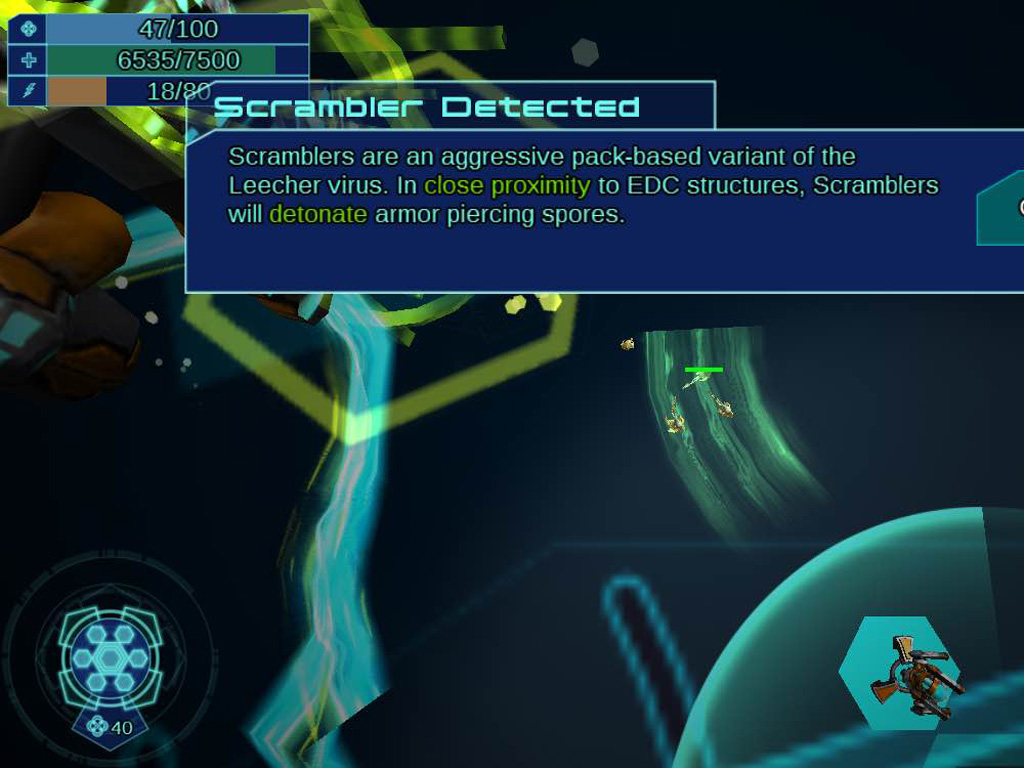
Clandestine Anomaly is the type of game that on paper sounds incredibly innovative and this is a big part of why it caught my attention. The game takes the player’s real GPS location and builds a world around it. While this is largely a superficial gimmick, it’s still undeniably cool to be defending the streets of Toronto from aliens.
On top of that, Winnipeg-based ZenFri’s title also features augmented reality (AR) shooting segments where the player is tasked with taking out robotic aliens in their living room (or wherever they’re located).
This sounds compelling and different, right? To a certain extent it is. But unfortunately, Clandestine Anomaly is also a classic example of how innovation and unique ideas don’t always result in great gameplay experiences. However Clandestine Anomaly is far from a bad game. It just feels like ZenFri is trying to blend a few too many concepts into one title.
The premise of Clandestine Anomaly’s story centres on your phone being hijacked by an alien race (which amusingly resemble 343 Guilty Spark from the Halo series). These aliens then enlist you, the “Terran,” to fight this covert war, with the help with a covert organization charged with defending earth.
While the story initially seems interesting – it is penned by Gear of War 2’s writer Joshua Ortega after all – it never really comes together and devolves into the standard sci-fi story most people would expect from a game like this.
Interestingly, while moving through the story I couldn’t help but be reminded of Destiny’s lacklustre narrative. Similar to Bungie’s space epic, there isn’t really anything wrong with Clandestine Anomaly’s narrative, it just isn’t memorable or very interesting. Although it’s important to point out that story is rarely an important part of mobile titles (amusingly, just like it wasn’t in Destiny), so it’s difficult to knock the game for this.
In terms of gameplay, Clandestine Anomaly is broken up into different segments. The more substantial part of the game will be familiar to anyone who has played a “tower defense” title before. The player builds bases called Pulsars that have multiple hexagons attached to their perimeter. Various projectile weapons – called Jackals and Spitfires and a variety of other names – can then be created and placed in these blank spots. These weapons are then used to take out a constantly advancing army of enemies.
Eventually if one of your Pulsars takes too much damage, it will stop working. If too many enemies make it to your generator and its health reaches zero, you’ll fail the mission. Building Pulsars side by side allows you to view your enemies path and take out the portal your foes spawn at (this is generally the goal of most missions).
The other section of the game drops you into a first-person augmented reality view and has you taking out hordes of aliens in first-person. Thankfully this portion is confined to short 20 second bursts, and is completely optional.
The augmented reality part of the game is most useful when you’re surrounded by enemies, allowing you to enter first-person mode and take out a barrage of foes, or a portal. An RPG statistic system is also thrown into the mix allowing players to upgrade their weapons.
But potential players should also take this into consideration; given Clandestine Anomaly’s focus on GPS and gyroscope aiming, it isn’t the type of game you’ll be able to play on the subway (where you usually won’t have a GPS signal) or in public, since the game’s augmented reality parts require you to move your phone around a lot. The game actually won’t even load unless you have a GPS signal (you can launch the game sometimes before you lose signal though).
Also, if you happen to start playing Clandestine Anomaly in an area you don’t spend a lot of time in, like a friend’s house who doesn’t live in the same city, you won’t be able to access its augmented reality features. To enter the game’s AR laser mode you’ll need to be at your “home base,” a location you mark on a map near the beginning of Clandestine Anomaly. Your base also switches around in later levels, forcing you to go to physical locations to use the laser (this is one of the few times your map matters).
While frustrating, GPS use is a significant part of Clandestine Anomaly, so issues like this should be expected (I actually had to restart my game because I started playing it at a friend’s house many kilometers away from where I live). Some sort of option allowing the player to change their map, or at the very least, their home base, would have been a welcome addition.
If Clandestine Anomaly’s gameplay sounds confusing, you aren’t alone. My first half hour with the game felt like a chore and it took me quite some time to figure out the basics of how to play. In terms of other problems, I also found it hard to select an individual portion of a pulsar, sometimes causing me to destroy the entire platform rather than just one section of it, making it easy for aliens to quickly overrun my defences.
With that said though, once I finally figured out Clandestine Anomaly’s basics, I was surprised to discover there’s a satisfying level of strategy that stems from managing your resources, building Pulsars and trying to find the enemies’ spawn point; although gameplay is for the most part very repetitive.
In the end Clandestine Anomaly is full of great ideas that never really come together in a cohesive way. The concept of an AR game that also takes advantage of a smartphone’s GPS is an exciting idea, but Clandestine Anomaly doesn’t really pull it off in a way that makes sense.
ZenFri’s Clandestine Anomaly is available on iOS for $3.99. The game is set to come to Android in the near future.
MobileSyrup may earn a commission from purchases made via our links, which helps fund the journalism we provide free on our website. These links do not influence our editorial content. Support us here.






